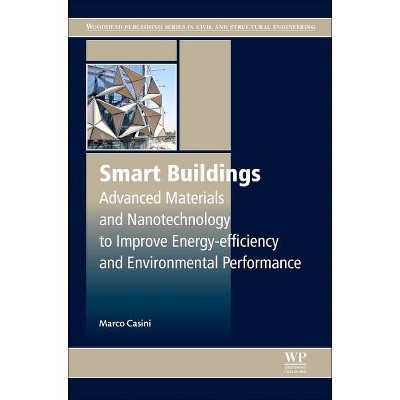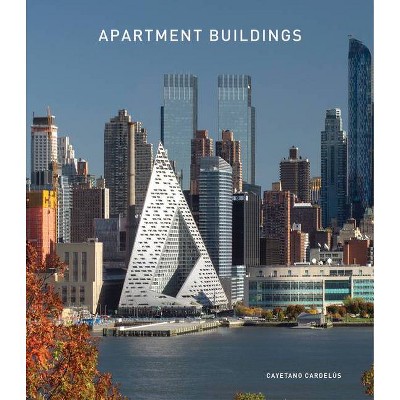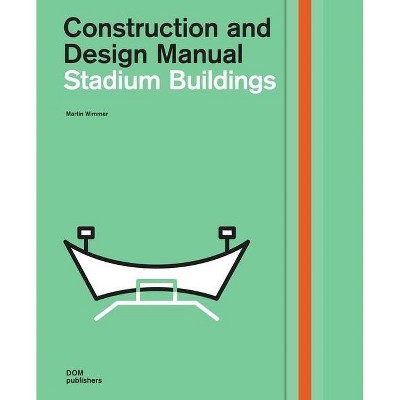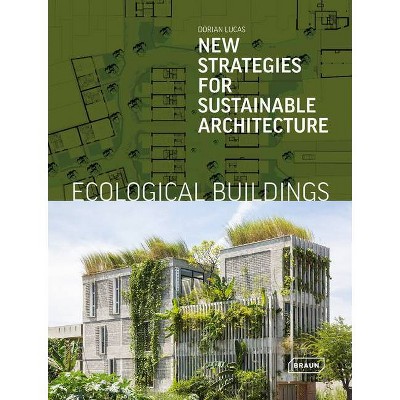People Flow in Buildings - by Marja-Liisa Siikonen (Hardcover)
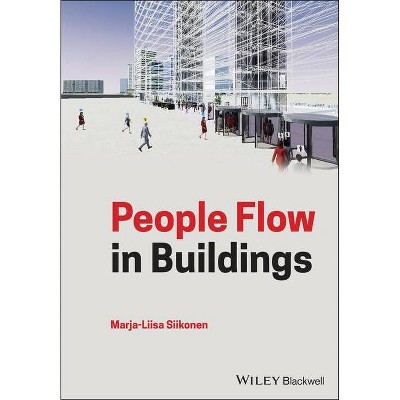
Similar Products
Products of same category from the store
AllProduct info
<p/><br></br><p><b> About the Book </b></p></br></br>"In this new book, vertical transportation devices will be described more from a software than a hardware perspective. The book will describe how to plan and design transportation systems to make passenger journeys pleasant and smooth in buildings. It illustrates measured passenger traffic profiles in different types of buildings and explains how elevator control systems and modern trends of building usage affect passenger service. Methods of measuring passenger journeys and utilization of this information in traffic planning are described. There are no simple equations to calculate passenger service levels. These are usually investigated and described by traffic simulation. Building traffic simulation includes modelling of building passenger traffic using agents, behavioural models and movement vertically and horizontally, and then modelling the impact of transportation equipment with their control systems. The book also provides a starting point for selection of proper transportation equipment for new buildings and for modernization or refurbishment, as well as utilizing simulated occupant evacuation times in elevator design. Energy consumption of transportation equipment will be briefly discussed"--<p/><br></br><p><b> Book Synopsis </b></p></br></br><p><b>Discover how to measure, control, model, and plan people flow within modern buildings with this one-stop resource from a leading professional </b></p> <p><i>People Flow in Buildings</i> delivers a comprehensive and insightful description of people flow, analysis with software-based tools. The book offers readers an up-to-date overview of mathematical optimization methods used in control systems and transportation planning methods used to manage vertical and horizontal transportation. </p> <p>The text offers a starting point for selecting the optimal transportation equipment for new buildings and those being modernized. It provides insight into making passenger journeys pleasant and smooth, while providing readers with an examination of how modern trends in building usage, like increasingly tall buildings and COVID-19, effect people flow planning in buildings. </p> <p><i>People Flow in Buildings</i> clearly defines the terms and symbols it includes and then moves on to deal with the measurement, control, modelling, and planning of people flow within buildings of all kinds. Each chapter contains an introduction describing its contents and the background of the subject. Included appendices describe measured passenger data and performed analyses. </p> <p>Readers will also benefit from the inclusion of: </p> <ul> <li>A thorough introduction to people-counting methods, including counting technology inside and outside buildings, passenger traffic components, and manual people-counting </li> <li>An examination of the passenger arrival process in building, including the Poisson arrival process and probability density function, and passenger arrivals in batches </li> <li>A consideration of daily vertical passenger traffic profiles, including two-way traffic profiles and the effects of inter-floor traffic </li> <li>An exploration of people flow solutions, including stairs, escalators, and elevators with collective and destination group control systems, as well as double-deck and multicar system </li> <li>People flow calculation and simulation models </li> <li>Elevator planning with ISO simulation method </li> <li>Elevator planning and evacuation of tall buildings </li> </ul> <p>Perfect for software designers in the private sector and academia, <i>People Flow in Buildings</i> will also earn a place in the libraries of elevator consultants, manufacturers, and architects who seek a one-stop reference for transportation devices from a functional and design perspective, as opposed to a hardware perspective. </p><p/><br></br><p><b> From the Back Cover </b></p></br></br><p><b>Discover how to measure, control, model, and plan people flow within modern buildings with this one-stop resource from a leading professional</b> <p><i>People Flow in Buildings</i> delivers a comprehensive and insightful description of people flow, analyzed with software-based tools. The book offers readers an up-to-date overview of mathematical optimization methods used in control systems and transportation planning methods used to manage vertical and horizontal transportation. <p>The text offers a starting point for selecting the optimal transportation equipment for new buildings and those being modernized. It provides insight into making passenger journeys pleasant and smooth, while providing readers with an examination of how modern trends in building usage, like increasingly tall buildings and COVID-19, affect people flow planning in buildings. <p><i>People Flow in Buildings</i> clearly defines terms and symbols and then moves on to the measurement, control, modelling, and planning of people flow within buildings of all kinds. Each chapter contains an introduction describing its contents and the background of the subject. Included appendices describe measured passenger data and performed analyses. <p>The book also provides: <ul><li>A thorough introduction to people-counting methods, including counting technology inside and outside buildings, passenger traffic components, and manual people-counting</li><li>An examination of the passenger arrival process in building, including the Poisson arrival process and probability density function, and passenger arrivals in batches</li> <li>A consideration of daily vertical passenger traffic profiles, including two-way traffic profiles and the effects of inter-floor traffic</li> <li>An exploration of people flow solutions, including stairs, escalators, and elevators with collective and destination group control systems, as well as double-deck and multicar system</li><li>The latter part of the book concentrates on people flow planning by calculation and traffic simulation methods</li><li>The effect of traffic patterns for simulation results are compared and examples of elevator planning using the ISO 8100-32 standard, and CIBSE Guide D are shown for different building types</li><li>Finally the status of evacuation standards and examples of evacuation modes in tall buildings are described</li></ul> <p>Perfect for software designers in the private sector and academia, <i>People Flow in Buildings</i> also appeals to elevator consultants, manufacturers, and architects who seek a one-stop reference for transportation devices from a functional and design perspective, as opposed to a hardware perspective.<p/><br></br><p><b> About the Author </b></p></br></br><p><b>Dr. Marja-Liisa Siikonen (née Jokela), PhD, </b> is the CEO of MLS Lift Consulting. Earlier she worked as a Director of People Flow Planning in KONE Corporation, Finland. She received her M.Sc. in technical physics, and Lic.Sc. (Tech.) and D.Sc. (Tech.) degree in applied mathematics from the Helsinki University of Technology. She has published around 100 articles and holds 250 patents in the field of elevator control systems and energy consumption, elevator traffic planning, building traffic simulation and evacuation, and people flow in buildings.
Price History
Price Archive shows prices from various stores, lets you see history and find the cheapest. There is no actual sale on the website. For all support, inquiry and suggestion messages communication@pricearchive.us

